| Revision as of 14:22, 28 August 2022 editCitation bot (talk | contribs)Bots5,420,901 edits Add: date. | Use this bot. Report bugs. | Suggested by Whoop whoop pull up | #UCB_webform 2/3← Previous edit | Revision as of 16:13, 6 September 2022 edit undoKPBryan (talk | contribs)1 editm →Born before 1701Tags: Reverted use of deprecated (unreliable) sourceNext edit → | ||
| Line 383: | Line 383: | ||
| * ] (1580–1631), leader of the settlement of ] | * ] (1580–1631), leader of the settlement of ] | ||
| * ] (1585–1652), clergyman | * ] (1585–1652), clergyman | ||
| * ] (1598 - 1648), Founder of ] 1629 in early America (]), Grandfather of ] and ancestor of ]<ref>https://en.wikipedia.org/Edmund_Ingalls</ref> | |||
| * ] (1612–1672), poet | * ] (1612–1672), poet | ||
| * ] (1616-1678/79), penultimate governor of the ] | * ] (1616-1678/79), penultimate governor of the ] | ||
Revision as of 16:13, 6 September 2022
County of England For other places with the same name, see Lincolnshire (disambiguation). "Lincs" redirects here. For other uses, see Lincs (disambiguation).Non-metropolitan and ceremonial county in England
| Lincolnshire | |
|---|---|
| Non-metropolitan and ceremonial county | |
 Flag Flag Coat of arms Coat of arms | |
| Motto(s): Land and God | |
 Lincolnshire within England Lincolnshire within England | |
| Coordinates: 53°4′N 0°11′W / 53.067°N 0.183°W / 53.067; -0.183 | |
| Sovereign state | United Kingdom |
| Constituent country | England |
| Region | East Midlands Yorkshire and the Humber (North Lincolnshire and North East Lincolnshire) |
| Time zone | UTC+0 (GMT) |
| • Summer (DST) | UTC+1 (BST) |
| UK Parliament | |
| Ceremonial county | |
| ] | Toby Dennis |
| ] | Michael Scott (2020–21) |
| Area | 6,977 km (2,694 sq mi) |
| • Rank | 2nd of 48 |
| Population | 1,103,320 |
| • Rank | 19th of 48 |
| Density | 158/km (410/sq mi) |
| Ethnicity | 98.5% White |
| Non-metropolitan county | |
| County council | Lincolnshire County Council |
| Control | |
| Admin HQ | Lincoln |
| Area | |
| • Rank | of 21 |
| • Rank | of 21 |
| Density | |
| ITL | UKF30 |
| Website | www |
| Districts | |
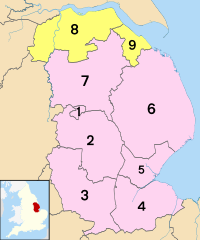 Districts of Lincolnshire Unitary County council area | |
| Districts | |
Lincolnshire (abbreviated Lincs.) is a county in the East Midlands of England, with a long coastline on the North Sea to the east. It borders Norfolk to the south-east, Cambridgeshire to the south, Rutland to the south-west, Leicestershire and Nottinghamshire to the west, South Yorkshire to the north-west, and the East Riding of Yorkshire to the north. It also borders Northamptonshire in the south for just 20 yards (19 m), England's shortest county boundary. The county town is the city of Lincoln, where the county council is based.
The ceremonial county of Lincolnshire consists of the non-metropolitan county of Lincolnshire and the area covered by the unitary authorities of North Lincolnshire and North East Lincolnshire. Part of the ceremonial county is in the Yorkshire and the Humber region of England, and most is in the East Midlands region. The county is the second-largest of the English ceremonial counties and one that is predominantly agricultural in land use. The county is fourth-largest of the two-tier counties, as the unitary authorities of North Lincolnshire and North East Lincolnshire are not included.
The county has several geographical sub-regions, including the rolling chalk hills of the Lincolnshire Wolds, the Lincolnshire Fens (south-east Lincolnshire), the Carrs (similar to the Fens but in north Lincolnshire), the industrial Humber Estuary and North Sea coast around Grimsby and Scunthorpe, and in the south-west of the county, the Kesteven Uplands, rolling limestone hills in the district of South Kesteven.
History
Main article: History of Lincolnshire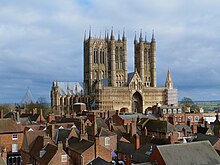
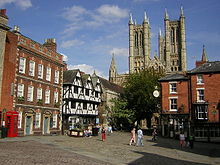
During pre-Roman times, most of Lincolnshire was inhabited by the Corieltauvi people. The language of the area at that time would have been Common Brittonic, the precursor to modern Welsh. The name Lincoln was derived from Lindum Colonia.
Large numbers of Germanic speakers from continental Europe settled in the region following the withdrawal of the Romans. Though these were later identified as Angles, it is unlikely that they migrated as part of an organized tribal group. Thus, the main language of the region quickly became Old English. However, it is possible that Brittonic continued to be spoken in some communities as late as the eighth century.
Modern-day Lincolnshire is derived from the merging of the territory of the Kingdom of Lindsey with that controlled by the Danelaw borough of Stamford. For some time the entire county was called "Lindsey", and it is recorded as such in the 11th-century Domesday Book. Later, the name Lindsey was applied to the northern core, around Lincoln. This emerged as one of the three Parts of Lincolnshire, along with the Parts of Holland in the south-east, and the Parts of Kesteven in the south-west, which each had separate Quarter Sessions as their county administrations.
In 1888 when county councils were set up, Lindsey, Holland and Kesteven each received separate ones. These survived until 1974, when Holland, Kesteven, and most of Lindsey were unified into Lincolnshire. The northern part of Lindsey, including Scunthorpe Municipal Borough and Grimsby County Borough, was incorporated into the newly formed non-metropolitan county of Humberside, along with most of the East Riding of Yorkshire.
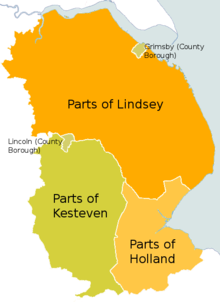
A local government reform in 1996 abolished Humberside. The land south of the Humber Estuary was allocated to the unitary authorities of North Lincolnshire and North East Lincolnshire. These two areas became part of Lincolnshire for ceremonial purposes, such as the Lord-Lieutenancy, but are not covered by the Lincolnshire police; they are in the Yorkshire and the Humber region.
The remaining districts of Lincolnshire are Boston, East Lindsey, Lincoln, North Kesteven, South Holland, South Kesteven, and West Lindsey. They are part of the East Midlands region.
The area was shaken by the 27 February 2008 Lincolnshire earthquake, reaching between 4.7 and 5.3 on the Richter magnitude scale; it was one of the largest earthquakes to affect Britain in recent years.
Lincolnshire is home to Woolsthorpe Manor, birthplace and home of Sir Isaac Newton. He attended The King's School, Grantham. Its library has preserved his signature, carved into a window sill when he was a youth.
-
 Belton House
Belton House
-
 Boston Stump
Boston Stump
-
 Gainsborough Old Hall
Gainsborough Old Hall
-
 Harlaxton Manor
Harlaxton Manor
-
 Normanby Hall
Normanby Hall
-
 Tattershall Castle
Tattershall Castle
-
 Thornton Abbey
Thornton Abbey
-
 St James' Church, Louth
St James' Church, Louth
Geography
The geographical layout of Lincolnshire is quite extensive and mostly separated by many rivers and rolling countryside. The north of the county begins from where the Isle of Axholme is located near the meeting points of the rivers Ouse and Trent near to the Humber. From there, the southside of the Humber esturary forms the border between Lincolnshire and the East Riding of Yorkshire. From there, the south bank of the Humber Estuary where the Humber Bridge crosses the estuary at Barton upon Humber, is used primarily for the shipping ports at Immingham, New Holland and Grimsby. From there, the rest of the southern bank forms the Lincolnshire Coast from Cleethorpes to Mablethorpe and then onto Skegness. From Skegness, the rest of the Lincolnshire Coastline forms the sea boundary and border with Norfolk at the Wash. The coast then at Boston becomes the meeting point of the rivers Welland and Haven.
The rest of the county boundary runs roughly to the point of Sutton Bridge, which is separated from Norfolk by the River Nene which begins to branch off from the North Sea. The border with Lincolnshire to Cambridgeshire begins at Crowland, Market Deeping and Stamford which form the southern boundary of the county with both Peterborough, Rutland and briefly Northamptonshire. From there, the border with Leicestershire and Nottinghamshire begins at Sleaford, Grantham, Lincoln and Gainsborough. From Gainsborough, the border with South Yorkshire begins at Haxey and Epworth before looping back to the original north of the county near Scunthorpe with East Riding of Yorkshire at the Isle of Axholme and Goole.
Bedrock in Lincolnshire features Jurassic limestone (near Lincoln) and Cretaceous chalk (north-east). The area around Woodhall Spa and Kirkby on Bain is dominated by gravel and sand. For much of prehistory, Lincolnshire was under tropical seas, and most fossils found in the county are marine invertebrates. Marine vertebrates have also been found including ichthyosaurus and plesiosaur.
The highest point in Lincolnshire is Wolds Top (168 m, 551 ft), at Normanby le Wold. Some parts of the Fens may be below sea level. The nearest mountains are in Derbyshire.
The biggest rivers in Lincolnshire are the Trent, running northwards from Staffordshire up the western edge of the county to the Humber estuary, and the Witham, which begins in Lincolnshire at South Witham and runs for 132 km (82 miles) through the middle of the county, eventually emptying into the North Sea at The Wash. The Humber estuary, on Lincolnshire's northern border, is also fed by the River Ouse. The Wash is also the mouth of the Welland, the Nene and the Great Ouse.
Lincolnshire's geography is fairly varied, but consists of several distinct areas:
- Lincolnshire Wolds: area of rolling hills in the north-east of the county designated an Area of Outstanding Natural Beauty
- The Fens: dominating the south-east quarter of the county
- The Marshes: running along the coast of the county
- Lincoln Edge or Cliff: limestone escarpment running north–south along the western half of the county
Lincolnshire's most well-known nature reserves include Gibraltar Point National Nature Reserve, Whisby Nature Park Local Nature Reserve, Donna Nook National Nature Reserve, RSPB Frampton Marsh and the Humberhead Peatlands National Nature Reserve. Although the Lincolnshire countryside is intensively farmed, there are many biodiverse wetland areas, as well as rare limewood forests. Much of the county was once wet fenland (see The Fens).
From bones, we can tell that animal species formerly found in Lincolnshire include woolly mammoth, woolly rhinoceros, wild horse, wolf, wild boar and beaver. Species which have recently returned to Lincolnshire after extirpation include little egret, Eurasian spoonbill, European otter and red kite.
Governance
Main article: Politics of LincolnshireLincolnshire County Council is Conservative controlled, as are six of its seven district councils (Lincoln City Council is controlled by Labour).
Two further districts - North East Lincolnshire and North Lincolnshire - are unitary authorities. They were previously districts of Humberside county from 1974. In 1996, Humberside was abolished along with its county council. However some services in those districts are still shared with the East Riding of Yorkshire ceremonial county, rather than the rest Lincolnshire.
Lincolnshire is represented by 11 Members of Parliament (MPs). As of the 2019 general election, all 11 constituencies are represented by the Conservative Party.
Economy
This is a chart of trend of regional gross value added of Lincolnshire at current basic prices, according to the Office for National Statistics with figures in millions of British Pounds Sterling.
| Year | Regional gross value added (£ millions) |
Agriculture | Industry | Services |
|---|---|---|---|---|
| 1995 | 5,719 | 657 | 1,769 | 3,292 |
| 2000 | 6,512 | 452 | 2,046 | 4,013 |
| 2003 | 8,419 | 518 | 2,518 | 5,383 |
- includes hunting and forestry
- includes energy and construction
- includes financial intermediation services indirectly measured
Notable businesses based in Lincolnshire include the Lincs FM Group, Young's Seafood, Openfield and the Lincolnshire Co-operative (whose membership includes about one quarter of the population of the county).
Agriculture
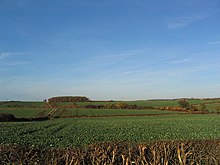
Lincolnshire has long been a primarily agricultural area, and it continues to grow large amounts of wheat, barley, sugar beet, and oilseed rape. In south Lincolnshire, where the soil is particularly rich in nutrients, some of the most common crops include potatoes, cabbages, cauliflowers, and onions. Lincolnshire farmers often break world records for crop yields. South Lincolnshire is also home to one of the UK's leading agricultural experiment stations, located in Sutton Bridge and operated by the Potato Council; Sutton Bridge Crop Storage Research engages in research for the British potato industry.
The Lincoln Longwool is a rare breed of sheep, named after the region, which was developed both for wool and mutton, at least 500 years ago, and has the longest fleece of any sheep breed. The Lincoln Red is an old breed of beef cattle, originating from the county. In the mid 20th century most farms in Lincolnshire moved away from mixed farming to specialise in arable cropping, partly due to cheap wool imports, partly to take advantage of efficiencies of scale and partly because the drier land on the eastern side of England is particularly suitable for arable cropping.
Mechanization around 1900 greatly diminished the number of workers required to operate the county's relatively large farms, and the proportion of workers in the agricultural sector dropped substantially during this period. Several major engineering companies developed in Lincoln, Gainsborough and Grantham to support those changes. Among these was Fosters of Lincoln, which built the first tank, and Richard Hornsby & Sons of Grantham. Most such industrial companies left during late 20th-century restructuring.
Today, immigrant workers, mainly from new member states of the European Union in Central and Eastern Europe, comprise a large component of the seasonal agricultural workforce, particularly in the south of the county. Here more labour-intensive crops are produced, such as small vegetables and cut flowers. This seasonal influx of migrant labour occasionally causes tension between the migrant workforce and local people, in a county which had been relatively unaccustomed to large-scale immigration. Agricultural training is provided at Riseholme College and in 2016 the University of Lincoln opened the Lincoln Institute for Agri-Food Technology.
Central Lincolnshire
This area covers North Kesteven, Lincoln and West Lindsey. It helps with development and economic planning around the three districts.
Politics
Services and retail
According to an Intra-governmental Group on Geographic Information (IGGI) study in 2000, the town centres were ranked by area thus (including North Lincolnshire and North East Lincolnshire areas):
- Lincoln
- Grantham
- Grimsby
- Boston and Scunthorpe (equal)
- Spalding
- Stamford
- Skegness
- Louth
- Sleaford
- Gainsborough
- Brigg
- Cleethorpes
- Bourne
- Horncastle and Mablethorpe (equal)
Public services
Education
Main article: Education in LincolnshireLincolnshire is one of the few counties in the UK that still uses the 11-plus to decide who may attend grammar school. As a result, many towns in Lincolnshire have both a grammar school and a secondary modern school. Lincolnshire's rural character means that some larger villages also have primary schools and are served by buses to nearby high schools.
Lincoln itself, however, is primarily non-selective, as is the area within a radius of about seven miles. In this area, almost all children attend comprehensive schools, though it is still possible to opt into the 11-plus system. This gives rise to the unusual result that those who pass the Eleven plus can attend a Grammar School outside the Lincoln Comprehensive area, but those who do not pass still attend a (partly non-selective) Comprehensive school.
Transport
Main article: Transport in Lincolnshire
Being on the economic periphery of England, Lincolnshire's transport links are poorly developed compared with many other parts of the United Kingdom. The road network in the county is dominated by single carriageway A roads and local roads (B roads) as opposed to motorways and dual carriageways – the administrative county of Lincolnshire is one of the few UK counties without a motorway, and until several years ago, it was said that there was only about 35 km (22 mi) of dual carriageway in the whole of Lincolnshire. The M180 motorway passes through North Lincolnshire, splitting into two dual carriageway trunk roads to the Humber Bridge and Grimsby, and the A46 is now dual carriageway between Newark-on-Trent and Lincoln.
The low population density of the county means that the number of railway stations and train services is very low considering the county's large area. Many of the county's railway stations were permanently closed following the Beeching Report of 1963. The most notable reopening has been the line and two stations between Lincoln and Sleaford, which reopened within months of the Beeching closure. Most other closed lines in the county were long ago lifted and much of the trackbed has returned to agricultural use.
Prior to 1970, a through train service operated between Cleethorpes and London King's Cross via Louth, Boston and Peterborough. The part of this line in Grimsby is now the A16 road, preventing reinstatement as a railway line, and a small section of the line is now the Lincolnshire Wolds Railway, with an extension towards Louth in progress.
A daily through train service operated between Cleethorpes and London King's Cross via Grimsby, Market Rasen and Lincoln Central until the late 1980s. The Humberlincs Executive, as the service was known, was operated by an InterCity 125, but was discontinued following the electrification of the East Coast Main Line. Passengers now have to change trains at Newark North Gate when travelling to and from London. However, the East Coast Main Line passes through the western edge of the county and one can catch direct trains to London from Grantham.
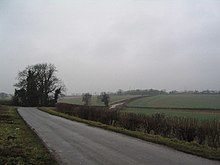
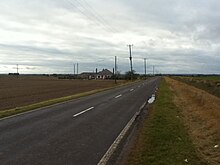
Most rail services are currently operated by East Midlands Railway and Northern Trains. London North Eastern Railway and CrossCountry have services which pass through the county, with London North Eastern Railway frequently passing and stopping at Grantham on the East Coast Main Line and a service every other hour to Lincoln, while CrossCountry trains stop at Stamford on their way between Birmingham and Stansted Airport. Stations along the Humber are served by TransPennine Express services between Manchester Airport and Cleethorpes. One of the most infrequent services in the UK is in Lincolnshire: the Sheffield-Gainsborough Central-Cleethorpes line has passenger trains only on a Saturday, with three trains in both directions. This line is, however, used for freight.
On 22 May 2011 East Coast started a Lincoln-London service, initially one train a day each way, and there is a northbound service on a Sunday. This was increased in 2019 to a service every two hours. East Midlands Railway also run a daily (Mon-Sat) service each way between Lincoln and London St Pancras, though this is a stopping service which takes around three hours via Nottingham, compared to London North Eastern Railway's service to London King's Cross which takes around 1 hour 50 minutes.
The only airport in Lincolnshire is Humberside Airport, near Brigg. East Midlands Airport the main airport servicing the East Midlands is within travelling distance of the county. Doncaster Sheffield Airport near Doncaster is within travelling distance of much of Lincolnshire.
The county's biggest bus companies are Stagecoach Grimsby-Cleethorpes (formerly Grimsby-Cleethorpes Transport) and Stagecoach in Lincolnshire, (formerly Lincolnshire Road Car). There are several smaller bus companies, including Brylaine of Boston, Delaine Buses and Hornsby's of Scunthorpe.
A Sustrans cycle route runs from Lincoln to Boston in the south of the county.
Health care
The United Lincolnshire Hospitals NHS Trust is one of the largest trusts in the country, employing almost 4,000 staff and with an annual budget of over £200 million. The north of the county is served by the Northern Lincolnshire and Goole Hospital NHS Foundation Trust.
Some of the larger hospitals in the county include:
- Diana Princess of Wales Hospital, Grimsby
- Scunthorpe General Hospital
- Boston Pilgrim Hospital
- Lincoln County Hospital
Since April 1994, Lincolnshire has had an Air Ambulance service. The air ambulance is stationed at RAF Waddington near Lincoln and can reach emergencies in Lincolnshire within 25 minutes. An A&E hospital is only 10 minutes away by helicopter from any accident in Lincolnshire.
Drainage
Separately to the commercial water companies the low-lying parts of the county are drained by various internal drainage boards, such as the Black Sluice Internal Drainage Board,Witham 4th District IDB, Lindsey Marsh Drainage Board Archived 18 April 2009 at the Wayback Machine, or the Welland and Deepings Internal Drainage Board.
Towns and villages
In terms of population, the 12 biggest settlements in the county by population are:
- Lincoln (Population: 97,541)
- Grimsby (Population: 88,243)
- Scunthorpe (Population: 82,334)
- Grantham (Population: 44,580)
- Cleethorpes (Population: 38,996)
- Boston (Population: 35,124)
- Spalding (Population: 34,613)
- Gainsborough (Population: 22,841)
- Stamford (Population: 19,701)
- Skegness (Population: 19,579)
- Sleaford (Population: 17,671)
- Louth (Population, 16,419)
A small part of the Thorne Waste area of the town of Thorne in South Yorkshire, known as the Yorkshire Triangle, currently falls under North Lincolnshire.

| Largest settlements in Lincolnshire by population | ||||||
|---|---|---|---|---|---|---|
| Rank | City/ Town | District/Unitary Authority | Population (2011 est.) | |||
| 1 | Lincoln | Lincoln | 119,541 | |||
| 2 | Grimsby | North East Lincolnshire | 88,243 | |||
| 3 | Scunthorpe | North Lincolnshire | 79,977 | |||
| 4 | Grantham | South Kesteven | 41,998 | |||
| 5 | Boston | Boston | 41,340 | |||
| 6 | Cleethorpes | North East Lincolnshire | 39,505 | |||
| 7 | Spalding | South Holland | 31,588 | |||
| 8 | Skegness | East Lindsey | 24,876 | |||
| 9 | Gainsborough | West Lindsey | 20,842 | |||
| 10 | Stamford | South Kesteven | 19,701 | |||
For a more detailed list of the largest populated towns see the List of settlements in Lincolnshire by population page.
For a full list of Lincolnshire towns and villages see the List of places in Lincolnshire page.
Tourism
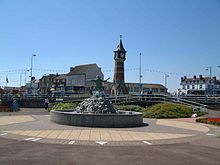


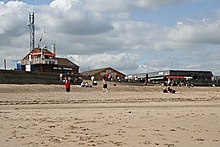


The majority of tourism in Lincolnshire relies on the coastal resorts and towns to the east of the Lincolnshire Wolds. The county has some of the best-known seaside resorts in the United Kingdom, which are a major attraction to visitors from across England, especially the East Midlands and parts of Yorkshire. There are three main coastal resorts in Lincolnshire and several smaller village resorts.
The main county seaside resort of Skegness with its famous Jolly Fisherman mascot and famous slogan "Skegness is so bracing", together with its neighbouring large village coastal resorts of Ingoldmells and Chapel St Leonards, provides the biggest concentration of resorts along the Lincolnshire Coast, with many large caravan and holiday sites. The resort offers many amusements, beaches, leisure activities and shops, as well as Butlins Skegness, Fantasy Island, Church Farm Museum, Natureland Seal Sanctuary, Skegness Stadium, Skegness Pier and several well-known local golf courses. There are good road, bus and rail links to the rest of the county.
The second largest group of resorts along the coast is the small seaside town of Mablethorpe, famous for its golden sands, and the neighbouring village resorts of Trusthorpe and Sutton-on-Sea. This area also offers leisure activities and has large caravan and holiday sites. But the area is less developed, with fewer amusement arcades and nightclubs, and poorer road links to the rest of the county; but the area offers a more traditional seaside setting. The rail service to these towns was axed in the Beeching cuts.
The third group of resorts includes the seaside town of Cleethorpes and the large village resort of Humberston within North East Lincolnshire. It has the Cleethorpes Coast Light Railway and Cleethorpes Pier along with its local golf courses and caravan and holiday sites, whilst it is also the former site of Pleasure Island Family Theme Park. Cleethorpes is well-served by road and rail; it is easily accessible from the M180 and the TransPennine Express route to Manchester.
Nature is an attraction for many tourists: the south-east of the county is mainly fenland that attracts many species of birds, as do the national nature reserves at Gibraltar Point, Saltfleetby-Theddlethorpe and Donna Nook, which also contains a large grey seal colony which is popular with visitors.
The market towns of the Lincolnshire Wolds (Louth, Alford, Horncastle, Caistor and Spilsby) are also attractive, with several having historically important buildings, such as Alford Manor House and Bolingbroke Castle. The Wolds are popular for cycling and walking, with regular events such as the Lincolnshire Wolds Walking Festival.
Culture
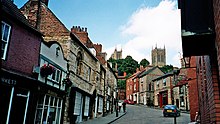
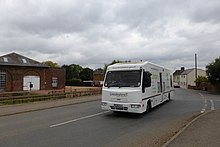
Lincolnshire is a rural area where the pace of life is generally much slower than in much of the United Kingdom. Due to the large distances between the towns, many villages have remained very self-contained, with many still having shops, pubs, local halls and local chapels and churches, offering a variety of social activities for residents. Fishing (in the extensive river and drainage system in the fens) and shooting are popular activities. A lot of the culture in Lincoln itself is based upon its history. The Collection is an archaeological museum and art gallery in Lincoln. Lincoln Cathedral also plays a large part in Lincoln's culture, playing host to many events throughout the year, from concert recitals to indoor food markets.
A Lincolnshire tradition was that front doors were used for only three things: a new baby, a bride, and a coffin.
People
Those born in Lincolnshire are sometimes given the nickname of Yellowbellies (often spelt "Yeller Bellies", to reflect the pronunciation of the phrase by the typical Lincolnshire farmer). The origin of this term is debated, but is most commonly believed to derive from the uniform of the 10th Regiment of Foot (later the Lincolnshire Regiment) which featured yellow facings. For this reason, the coat of arms of Lincolnshire County Council is supported by two officers of the regiment.
Notable people


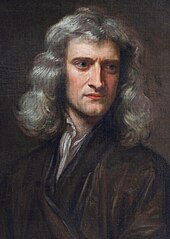

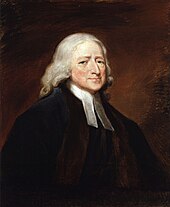


The following list of notable people associated with Lincolnshire is arranged chronologically by date of birth.
Main article: List of people from LincolnshireBorn before 1701
- Guthlac of Crowland (674–715), Christian saint
- Æthelhard (8th century-805), Archbishop of Canterbury
- Hereward the Wake (c.1035-c.1072), Anglo-Saxon nobleman
- Lucy of Bolingbroke (1074–1136), countess of Chester
- Gilbert of Sempringham (c.1085–1190), Saint and Founder of the Gilbertine Order
- Aaron of Lincoln (c.1125–1186), financier
- Hugh of Lincoln (1135/40-1200), Bishop of Lincoln
- Stephen Langton (c.1150–1228), Archbishop of Canterbury
- Nicolaa de la Haye (c.1150–1230), landowner and administrator
- Robert Grosseteste (c.1175–1253), Bishop of Lincoln
- Berechiah de Nicole (c.1210-c.1270), Tosafist
- Eleanor of Castile (1241–1290), wife of Edward I
- Little Saint Hugh of Lincoln (1246–1255), murder victim, falsely attributed to blood libel
- Katherine Swynford (c.1350–1403), third wife of John of Gaunt
- Henry IV of England (1367–1413), King of England
- Richard Foxe (1458–1528), bishop and founder of Corpus Christi College, Oxford
- John Taverner (c1490-1545), composer and organist
- John Whitgift (c.1503–1604), Archbishop of Canterbury
- John Foxe (c.1516–1587), author of Foxe's Book of Martyrs
- William Cecil, 1st Baron Burghley (1520–1598), Chief Advisor to Queen Elizabeth I
- Anne Askew (1521–1546), Protestant martyr
- William Byrd (1539–1623), composer
- John Smyth (c.1554-c.1612), founder of the Baptist denomination
- Robert Tighe (1562–1620), cleric and linguist
- Francis Meres (1565/1566-1647), churchman and author
- Captain John Smith (1580–1631), leader of the settlement of Jamestown, Virginia
- John Cotton (1585–1652), clergyman
- Edmund Ingalls (1598 - 1648), Founder of Lynn, Massachusetts 1629 in early America (United States), Grandfather of Martha Carrier and ancestor of Laura Ingalls Wilder
- Anne Bradstreet (1612–1672), poet
- John Leverett (1616-1678/79), penultimate governor of the Massachusetts Bay Colony
- Simon Patrick (1626–1707), English theologian and bishop
- Sir Isaac Newton (1642–1726), mathematician and physicist
- John Harrison (1693–1776), chronometer innovator
- William Stukeley (1687–1765), antiquarian
Born 1701–1850
- John (1703–1791) and Charles Wesley (1707–1788), founders of the Methodist movement
- Benjamin Huntsman (1704–1776), inventor of crucible steel
- Thomas Paine (1737–1809), political activist and philosopher
- Joseph Banks (1743–1820), botanist and naturalist
- Samuel Eyles Pierce (1746–1829), preacher and theologian
- Thomas Scott (1747–1821), Bible commentator and co-founder of the Church Missionary Society
- George Bass (1771-c.1803), explorer of Australia
- Matthew Flinders (1774–1814), navigator and cartographer
- Richard Watson (1781–1833), theologian and Methodist writer
- George Davenport (1783–1845), sailor and frontiersman
- Peter De Wint (1784–1849), landscape painter
- Pishey Thompson (1784–1862), publisher and antiquarian writer
- Sir John Franklin (1786–1847), Arctic explorer
- Andreas Kalvos (1792–1869), poet
- Christopher Wordsworth (1807–1885), Bishop of Lincoln
- Alfred Lord Tennyson (1809–1892), poet
- Herbert Ingram (1811–1860), journalist
- Lady Charlotte Guest (1812–1895), businesswoman and Welsh language translator
- George Boole (1815–1864), mathematician
- William Marwood (1818–1883), hangman
- Jean Ingelow (1820–1897), poet
- Charles Frederick Worth (1825–1895), fashion designer
- Edward King (1829–1910), Bishop of Lincoln
- Charlotte Alington Barnard (1830–1869), ballad composer and hymn writer
- Joseph Ruston (1835–1897), engineer and manufacturer
- Arnold Rylott (1839–1914), cricketer for Marylebone Cricket Club
- George Green (Medal of Honor) (1840–1898), Medal of Honor recipient
- Gonville Bromhead (1845–1891), Victoria Cross recipient
- Madge Kendal (1848–1935), actress
Born 1851–1950
- Ethel Rudkin (1893–1985), folklorist and archaeologist
- Sarah Swift (1854–1937), Royal College of Nursing founder
- Frank Bramley (1857–1915), artist
- Adrian Woodruffe-Peacock (1858–1922), clergyman and ecologist
- William Robertson (1860–1933), Field Marshal
- Halford Mackinder (1861–1947), geographer
- Thomas Colclough Watson (1867–1917), Victoria Cross recipient
- Cyril Bland (1872–1950), cricketer
- William Tritton (1875–1946), tank developer
- Frank Pick (1878–1941), railway administrator
- Sybil Thorndike (1882–1976), actress
- Alfred Piccaver (1884–1958), tenor
- Arthur Lucan (1885–1954), part of the music hall act Old Mother Riley
- Harold Jackson (VC) (1892–1918), Victoria Cross recipient
- Charles Richard Sharpe (1889–1963), Victoria Cross recipient
- Francis Hill (1899–1980), historian
- Frank Whittle (1907–1996), RAF officer
- John George Haigh (1909–1949), serial killer
- Douglas Bader (1910–1982), RAF flying ace
- James Cobban (1910–1999), educator and headmaster
- Chad Varah (1911–2007), priest and "The Samaritans" founder
- Ted Savage (1912–1964), footballer
- Guy Gibson (1918–1944), bomber pilot and Victoria Cross recipient
- Steve Race (1921–2009), musician and broadcaster
- Liz Smith (1921–2016), actress
- Leslie Manser (1922–1942), bomber pilot and Victoria Cross recipient
- Brian Tierney (1922–2019), historian
- Nicholas Parsons (1923–2020), radio and TV presenter
- Neville Marriner (1924–2016), violinist and conductor
- Margaret Thatcher (1925–2013), former Prime Minister
- Elizabeth Jennings (1926–2001), poet
- Brenda Fisher (1927–2022), swimmer
- Joan Plowright (born 1929), actress
- Jeff Hall (1929–1959), footballer
- Colin Dexter (1930–2017), crime writer
- Bill Podmore (1931–1994), television producer
- Neil McCarthy (1932–1985), actor
- Frank Sargeant (born 1932), retired Anglican bishop
- Mervyn Winfield (1932–2014), cricketer
- Bernard Codd (1934–2013), motorcycle road racer
- Victor Emery (1934–2002), physicist
- Mike Pinner (born 1934), football goalkeeper
- Bruce Barrymore Halpenny (born 1937), military historian and author
- Roy Axe (1937–2010), car designer
- Barry Spikings (born 1939), Hollywood producer
- John Alderton (born 1940), actor
- John Hurt (1940-2017), actor
- Jo Kendall (1940-2022), actress
- Ted Lewis (1940–1982), crime writer
- Alec Brader (MBE) (born 1942) professional footballer, schoolteacher and youth athletics coach
- Graham Oates (born 1943), footballer
- John Hargreaves (born 1944), cricketer
- Tony Jacklin (born 1944), golfer
- Roger Scruton (1944–2020), philosopher
- Graham Taylor (1944-2017), footballer, club and England national team manager.
- Chris Wright (born 1944), music industry executive and businessman
- Patricia Hodge (born 1946), actress
- Iain Matthews (born 1946), singer-songwriter and musician
- Philip Priestley (born 1946), former British diplomat
- Richard Budge (1947–2016), coal mining entrepreneur
- Ray Clemence (born 1948), football goalkeeper
- Jim Broadbent (born 1949), actor
- Geoff Capes (born 1949), shotputter
- Rod Temperton (1949–2016), songwriter, record producer and musician
- Bernie Taupin (born 1950), songwriter
Born 1951 onwards
- Brian Bolland (born 1951), comics artist
- John Ward (born 1951), Footballer
- David Ward (born 1953), former Member of Parliament (MP)
- Michael Foale (born 1957), astronaut
- Jennifer Saunders (born 1958), actress and comedian
- Chris Woods (born 1959), football goalkeeper
- Lee Chapman (born 1959), footballer
- Glenn Cockerill (born 1959), footballer
- Simon Garner (born 1959), footballer
- Alan Moulder (born 1959), record producer, mixing engineer and audio engineer
- John Cridland (born 1961), former Director-General of the Confederation of British Industry (CBI); Chair of Transport for the North (TfN)
- Bill Dunham (born 1961), former Deputy Commandant General of the Royal Marines
- Jonathan Van-Tam (born 1964), specialist in influenza, currently Deputy Chief Medical Officer for England
- Helen Fospero (born 1966), newsreader and journalist
- Antonio Berardi (born 1968), fashion designer
- Beverley Allitt (born 1968), serial killer
- Samantha Cameron (born 1971), businesswoman and wife of the former Prime Minister David Cameron
- Rae Earl (born 1971), author
- Jane Taylor (born 1972), singer and musician
- Robert Webb (born 1972), actor, comedian and writer
- Jonathan Kerrigan (born 1972), actor
- Paul Palmer (born 1974), swimmer
- Abi Titmuss (born 1976), poker player and glamour model
- Steve Housham (born 1976), footballer and manager
- Danny Butterfield (born 1979), footballer
- Colin Furze (born 1979), inventor and YouTube personality
- Kelly Adams (born 1979), actress
- Sheridan Smith (born 1981), actress
- Paul Mayo (born 1981), footballer
- Guy Martin (born 1981), motorcycle racer and television presenter
- Carl Hudson (born 1983), musician
- Oliver Ryan (born 1985), footballer
- Luke Wright (born 1985), cricketer
- Lee Frecklington (born 1985), footballer
- Kate Haywood (born 1987), swimmer
- Sam Clucas (born 1990), footballer
- Scott Williams (born 1990), darts player
- Thomas Turgoose (born 1992), actor
- Eliza Butterworth (born 1993), actress
- Patrick Bamford (born 1993), footballer
- Jack Harvey (born 1993), racing driver
- Ella Henderson (born 1996), singer and songwriter
- Holly Humberstone (born 1999), singer and songwriter
- Ellis Chapman (born 2001), footballer
Local dialect
In common with most other Northern and Midlands dialects in England, "flat" a is preferred, i.e. /bæθ/ over /bɑːθ/, and also traditionally in words like water, pronounced /ˈwætər/ watter (though such a pronunciation is rarely heard nowadays). Similarly, /ʌ/ is usually replaced by /ʊ/. Features rather more confined to Lincolnshire include:
- Elaboration of standard English /eɪ/ or /iː/ into a complex triphthong approximating, and often transcribed -air- or -yair-. For example: "mate" ; "beast" ; "tates" (potatoes) .
- An equivalent elaboration of standard English /oʊ/ – commonly in Northern England – into -ooa-. For example, "boat" .
- Insertion of an extra schwa into the standard English diphthong /aʊ/.
- Vocabulary: "duck" as a term of endearment or informal address, "mardy" meaning upset or angry, "mowt" (pronounced like mout) for might, "while" as a substitute for standard English "until", "frit" meaning frightened, "grufty" meaning dirty or disgusting, and the inimitable salutation "now then!?" (hello), sometimes written nairn to reflect pronunciation.
- In the north-east of the county, around Grimsby and Immingham, the nurse-square merger can be heard, as is also the case along the east coast of Yorkshire and also in Liverpool. Words that take /ɜː/ in RP take /ɛː/ in these areas.
Lincolnshire has its own dialect "champion", a farmer from the village of Minting called Farmer Wink (real name Robert Carlton), who has produced videos about rural life, narrated in his broad Lincolnshire accent. A resident of Woodhall Spa has published a dictionary of words once prevalent in parts of the county.
Music
Lincolnshire was historically associated with the Lincolnshire bagpipe, an instrument derided as a coarse and unpleasant instrument in contemporary literature, but noted as very popular in the county. The last player, John Hunsley of Middle Manton, died in 1851, and since then the instrument has been extinct.
In 1937, Percy Grainger wrote his Lincolnshire Posy for wind band. The piece is a compilation of folk songs "musical wildflowers" collected by the composer in and around the county of Lincolnshire.
Food

Lincolnshire has a number of local dishes:
- Stuffed chine – this is salted neck-chine of a pig taken from between the shoulder blades, salted for up to ten months and stuffed with parsley (other ingredients are normally kept secret), and served cold.
- Haslet – a type of pork loaf, also flavoured with sage (pronounced HAYSS-let or AYSS-let in Lincolnshire but HAZ-let in many other parts of the country).
- Lincolnshire sausages – most butchers in Lincolnshire have their own secret recipe for these and a competition is held each year to judge the best sausages in the county. Traditional Lincolnshire sausages are made entirely from minced pork, stale bread crumb (rusk is used nowadays) pepper, sage and salt. The skins should be natural casings which are made from the intestines of either sheep or pig.
- Pork pies – the same pork butchers will take a pride in their unique recipe for pork pies.
- Giblet pie.
- Mutton stuffed with oysters.
- Plum bread – as with plum pudding, plum refers to dried fruit, namely currants, raisins and sultanas, sometimes soaked in tea.
- Grantham Gingerbread – a hard white ginger biscuit.
- Lincolnshire Poacher cheese – a cheddar-style cheese produced in Alford. Lincolnshire Poacher has won numerous awards over the years including Supreme Champion at the 1996/7 British Cheese Awards and Best British Cheese at the World Cheese awards in 2001/2.
- Batemans ales – a beer brewed in Wainfleet and served in many pubs in the county and further afield.
- There are several small breweries.
- Grimsby is renowned for its fishing industry, and historically Grimsby Fish has carried a premium price. Since the decline of the fishing industry following entry to the European Economic Community in the 1970s this is no longer the case, with the majority of fish sold at the town's fish market being brought overland from other ports. However, Grimsby Fish is still a recognised product, one associated with a particular area that specialises in and has expertise in a particular trade (cf Sheffield steel). In 2009 smoked fish from the town was granted Protected Geographical Indication by the European Union, reflecting the unique smoking methods used by certain local fish companies.
Craft Chocolatiers can be found throughout the county, such as Hansens in Folkingham. In 2013 Redstar Chocolate's Duffy's Venezuela Ocumare Milk won a gold medal as best bean-to-bar. The factory is in Cleethorpes.
Events
Every year the Lincolnshire Agricultural Society, founded in 1869, stages the Lincolnshire Agricultural Show. It is held on the Wednesday and Thursday of the last whole week of June at its showground at Grange de Lings, a few miles north of Lincoln on the A15. The show was first held here in 1958. First held around the year 1884, it is one of the largest agricultural shows in the country, and is attended by around 100,000 people over its two days. The showground is in regular use throughout the year for a wide range of other events and functions.
Smaller local agricultural shows, such as the Heckington Show can still be found. Corby Glen sheep fair has been held since 1238.
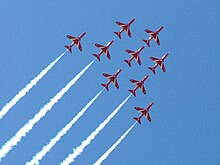
Each year RAF Waddington is the home to the RAF International Waddington Air Show. The two-day event attracts around 150,000 people and usually takes place during the first weekend of July. Since its inception over 35 countries have participated, with aircraft from around the globe attending the Lincolnshire Base. Beginning 2017, the event will be held at nearby RAF Scampton.
On the Monday before Easter, an unusual auction takes place in Bourne to let the grazing rights of the Whitebread Meadow. Bidding takes place while two boys race toward the Queen's Bridge in Eastgate, the end of which dash is equivalent to the falling of the gavel. The whole affair dates back to the 1742 will of William Clay.
The Haxey Hood village competition takes place every January, as it has for over 700 years.
Stamford's Mid-Lent fair sees showmen converge on the town the week after Mothering Sunday, with rides and sideshows filling Broad Street, the Sheepmarket and the Meadows for a week. Stalls selling Grantham gingerbread and nougat are a traditional feature. The following week sees them in Grantham, on the way north for the Summer. Roger Tuby brings a small funfair to Bourne and then to Spalding in Spring and returns in Autumn at the end of the season.
The villages of Tetford and Salmonby hold an annual Scarecrow Festival in May every year.
The Belchford Downhill Challenge which is held every two years: soapbox racers race down the hill at up to 30 km/h. The turnout has been up to 1,000.
Lincoln Christmas Market, a street market held throughout the historic area of the city at the start of December, is one of the largest Christmas markets in Europe, attracting over 250,000 people over the four-day event. Around the same time, Christmas lights are turned on in Bourne, Sleaford, Skegness, and other towns.
Throughout the summer the Stamford Shakespeare Company presents the Bard's plays in the open-air theatre at Tolethorpe Hall, which is actually in Rutland.
The Spalding Flower Parade was held in late spring every year between 1959 and 2013. Colourful floats decorated with tulip heads competed for a cup.
Sport
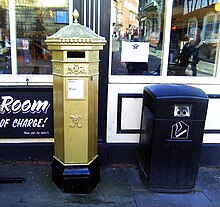
The main sports played in the county are football, cricket and rugby union. Lincolnshire does not have a high sporting profile, mainly due to the lack of facilities and high-profile football teams. Probably the most well-known sporting venues in Lincolnshire are Cadwell Park near Louth, where a round of the British Motorbike Championship is held on the last Monday of August every year and the racecourse at Market Rasen
- Three teams from Lincolnshire play in the Football League: Lincoln City play in Football League One, Grimsby Town play in Football League Two. In non-league football Scunthorpe United play in the National League, while Boston United and Gainsborough Trinity play in the Football Conference North. A meeting between any of these clubs is a Lincolnshire derby; the most prominent meeting, having happened across four of the top five tiers of English football, is Lincoln City vs Grimsby Town.
- In cricket Lincolnshire are a minor county and play in the Minor Counties Championship.
- In hockey Lindum Hockey Club play in the north of Lincoln.
- Scunthorpe Rugby Club are the most notable rugby union team from Lincolnshire, and will play in the fifth level of the English league system in the 2017–18 season. Other notable teams include Market Rasen and Louth RUFC, Lincoln RFC, and Boston Rugby Club.
- Lincolnshire is home to one racecourse, at Market Rasen.
- Cadwell Park is the only motor-racing course in Lincolnshire. There is a speedway track in Scunthorpe, home of the Scunthorpe Scorpions, and stock-car racing at a stadium at Orby, near Skegness.
- Lincolnshire has an American Football club, the Lincolnshire Bombers, which has existed in its current guise since 2005.
- Lincolnshire is home to the UK roller derby team, the Lincolnshire Bombers Roller Girls, which is sponsored by Motörhead.
Symbols
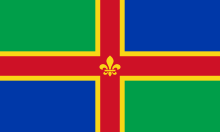
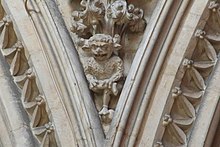
The unofficial anthem of the county is the traditional folk song, "The Lincolnshire Poacher", which dates from around 1776. A version of the song was the theme for BBC Radio Lincolnshire for many years.
According to a 2002 marketing campaign by the charity Plantlife, the county flower of Lincolnshire is the common dog-violet.
In August 2005, BBC Radio Lincolnshire and Lincolnshire Life magazine launched a vote for a flag of Lincolnshire to represent the county. Six competing designs were voted upon by locals and the winning submission was unveiled in October 2005. Lincoln has its own flag – St George's flag with a Fleur-de-Lys.
The Lincoln Imp has symbolised cathedral, city and county for many years. In 2006 it was replaced as the brand of Lincolnshire County Council by the stylised version seen on the header here which has lost even the unique pose of the carving.
Media
Press
The county is home to one daily newspaper, the Grimsby Telegraph which as the name suggests, is published in the town and whose circulation area ostensibly covers North East Lincolnshire, although it reaches as far south as Louth and Alford and as west as Brigg.
There are two further weekly papers which used to be published daily until 2011; the Lincolnshire Echo is published weekly from Lincoln and covers the majority of the county reaching as far north as Louth, and the Scunthorpe Telegraph which covers northern Lincolnshire. All three are ultimately owned by the Daily Mail and General Trust.
There are also a number of weekly papers serving individual towns published in the county by Johnston Press. One of these, the Stamford Mercury claims to be Britain's oldest newspaper, although it is now a typical local weekly and no longer covers stories from the whole East Midlands as the archived copies did.
Television
With the exception of a small area to the south-west of the county, Lincolnshire is served from the Belmont transmitter, receiving programmes from ITV Yorkshire and BBC One Yorkshire and Lincolnshire regions.
The BBC has, since 2003, provided the area with its twelfth regional service: BBC Yorkshire and Lincolnshire, carrying a local "Look North" news programme from the main studio in Hull, with input from other studios in Lincoln and Grimsby.
ITV Yorkshire provides coverage through its evening news programme "Calendar". Until late 2008 the station provided a separate edition for the Belmont transmitter (although it was still broadcast from Leeds). From January 2009 the area is now covered by a programme that covers the entire ITV Yorkshire region.
From 1959 to July 1974 ITV programmes were provided by Anglia Television (although some coverage could be received from the Manchester-based Granada and ABC Weekend). Based in Norwich the company had news offices in Grimsby. Following a transmitter change ITV services were provided by Yorkshire Television. This company kept open the offices in Grimsby and opened further facilities in Lincoln, although both of these closed in the mid-1990s.
South-west Lincolnshire receives BBC East Midlands and ITV Central which are broadcast from the Waltham-on-the-Wolds Transmitting Station. Although subject to co-channel interference from the Waltham transmitter, a small number of households in the southern tip of the county are able to receive regional programming from BBC East and ITV Anglia.
Many villages just west of the Lincoln Edge cannot get a signal from Belmont due to shadowing and instead get their TV from Emley Moor near Huddersfield.
Radio
The area is covered by several local radio stations including:
- BBC Lincolnshire Can be heard throughout historic Lincolnshire although its broadcast remit is the present county of Lincolnshire
- BBC Radio Humberside The counties of northern Lincolnshire that were formerly known as South Humberside
- Compass FM Grimsby, Cleethorpes and Immingham
- Heart Peterborough and South Lincolnshire
- Lincs FM Historic Lincolnshire
- Siren FM Lincoln
- Tulip Radio Spalding and South Holland
- Viking FM Northern Lincolnshire and the East Yorkshire, formerly the constituent areas of Humberside
Military

Air
Main article: Royal Air ForceBecause of its flat geography and low population density, Lincolnshire is an ideal place for airfields, and the Air Ministry built prolifically with the county hosting nearly seventy separate air bases. It became known as "bomber county". Since the end of the Second World War most of these airfields or stations were decommissioned, but the RAF retains a significant footprint in Lincolnshire for the air defence of the United Kingdom and aircrew training. For more information on former bases, see List of former RAF stations.
Two major front-line bases located in Lincolnshire are RAF Coningsby, which is one of only two RAF Quick Reaction Alert (QRA) Stations in the United Kingdom and home to the Eurofighter Typhoon jet fighters, and RAF Waddington, where most of the RAF's Intelligence, Surveillance, Target Acquisition and Reconnaissance aircraft are based. Other stations in Lincolnshire include RAF Cranwell, home to all Air Force Basic Officer Training for the Royal Air Force; RAF Scampton, home base to the Red Arrows Aerobatic Team and former base of the Avro Vulcan nuclear strike V bomber-force; RAF Barkston Heath, a training airfield; and minor bases such as RAF Kirton in Lindsey, RAF Donna Nook and RAF Digby.
Lincolnshire is also home to two active RAF and NATO-allied air weapons training bombing ranges, located along The Wash and north Lincolnshire coastline—RAF Holbeach active since 1926 (originally part of the former RAF Sutton Bridge station) and Donna Nook. The RAF Wainfleet range was decommissioned in 2010.
Army
The Army runs Sobraon Barracks, home of 160 (Lincoln) Squadron, Royal Logistic Corps (RLC), as well as Prince William of Gloucester Barracks, Grantham, home to the national specialist logistics units. In November 2016 the Ministry of Defence announced that the Grantham site would close in 2020.
Places of interest
| Key | |
| Abbey/Priory/Cathedral | |
| Accessible open space | |
| Amusement/Theme Park | |
| Castle | |
| Country Park | |
| English Heritage | |
| Forestry Commission | |
| Heritage railway | |
| Historic House | |
| Places of Worship | |
| Museum (free/not free) | |
| National Trust | |
| Theatre | |
| Zoo | |
- Alford Manor House

- Alford Windmill
- Alkborough Turf Maze
- Ayscoughfee Hall


- Bardney Limewoods
- Baldocks Mill

- Belmont Mast
- Belton House


- Bolingbroke Castle


- Boston Stump

- Bourne Abbey

- Boultham Park

- Branston Hall

- Burghley House

- Church Farm Museum, Skegness

- Crowland Abbey

- Cogglesford Mill

- Dambusters Inn and Heritage Centre

- Doddington Hall

- Dogdyke Engine

- Donna Nook
- Dunston Pillar
- East Lighthouse, Sutton Bridge
- Ellis Mill (windmill)
- Fantasy Island, Ingoldmells

- Gainsborough Old Hall


- Gainsthorpe Deserted Medieval Village

- Gibraltar Point
- Gordon Boswell Romany Museum

- Grantham Museum

- Grimsby Dock Tower
- Grimsthorpe Castle

- Gunby Hall


- Hartsholme Country Park

- Harlaxton Manor

- Heckington Windmill
- Hubbard's Hills, Louth
- Kesteven Forest
- Lincoln Arboretum

- Lincoln Castle

- Lincoln Cathedral

- Lincolnshire Aviation Heritage Centre

- Lincolnshire's coastal grazing marshes
- Lincolnshire Wolds Railway

- LNER Class A4 4468 Mallard, 126MPH Sign, Essendine
- Maud Foster Windmill, Skirbeck, Boston
- Metheringham Windmill
- Mount Pleasant Mill, Kirton in Lindsey
- Mrs Smith's Cottage, Navenby

- National Fishing Heritage Centre

- Natureland Seal Sanctuary
- New Theatre Royal Lincoln
- Normanby Hall

- Pelham's Pillar
- Pinchbeck Engine and museum of land drainage

- River Ancholme
- Snipe Dales

- St. James Church, Louth

- St. Peter's Church, Barton upon Humber

- Sibsey Trader Mill
- Somerton Castle
- Stow Minster

- Tattershall Castle


- Tattershall College

- The Collection (The Usher Art Gallery)
- The Humber Bridge
- Lincolnshire Wolds

- Museum of Lincolnshire Life

- The South Common, Lincoln

- The Wash
- The West Common, Lincoln

- Thornton Abbey


- Waltham Windmill
- Whisby Nature Park
- Woolsthorpe Manor


See also
- Outline of England
- Custos Rotulorum of Lincolnshire – List of Keepers of the Rolls for Lincolnshire
- Earl of Lincoln is a title that has been created eight times in the Peerage of England and is currently represented.
- High Sheriff of Lincolnshire
- Lincolnshire (UK Parliament constituency) List of MPs for the Lincolnshire constituency
- Lincs Wind Farm
- Lists
- List of bridges and viaducts in Lincolnshire
- List of churches in Lincolnshire
- List of civil parishes in Lincolnshire
- List of companies in Lincolnshire – Both current and former
- List of forests and woodland in Lincolnshire
- List of monastic houses in Lincolnshire
- List of museums in Lincolnshire
- List of parliamentary constituencies in Lincolnshire
- List of places in Lincolnshire
- List of public art in Lincolnshire
- List of Roman sites in Lincolnshire
- List of schools in Lincolnshire
- List of watermills in Lincolnshire
- List of waterways in Lincolnshire
- List of windmills in Lincolnshire
- Lord Lieutenant of Lincolnshire
- Stamford Senior Youth Theatre
- 1185 East Midlands earthquake
References
- "No. 62943". The London Gazette. 13 March 2020. p. 5161.
- "Mid-2022 population estimates by Lieutenancy areas (as at 1997) for England and Wales". Office for National Statistics. 24 June 2024. Retrieved 26 June 2024.
- "Lincolnshire County Council". Thebythams.org.uk. 24 October 2005. Archived from the original on 6 May 2009. Retrieved 29 June 2010.
- Toby F. Martin, The Cruciform Brooch and Anglo-Saxon England, Boydell and Brewer Press (2015), pp. 174–178
- Catherine Hills, The Anglo-Saxon migration to Britain: an archaeological perspective (2016)
- Caitlin Green, The Origins of Louth: Archaeology and History in East Lincolnshire, 400,000 BC-AD 1086 (2014), pp. 66–67
- "County Map Of Lincolnshire - Information About Lincolnshire". Visit North West. Retrieved 5 February 2022.
- "Famous". www.blanchflower.org. Retrieved 5 February 2022.
- "Tier limbo at Lincolnshire's northern border". The Lincolnite. 31 December 2020. Retrieved 5 February 2022.
- Edward, Olivia. "The Lincolnshire Wolds - Geographical Magazine". geographical.co.uk. Retrieved 5 February 2022.
- "How many borders does Northamptonshire have? – SidmartinBio". www.sidmartinbio.org. Retrieved 5 February 2022.
- "Norfolk and Lincolnshire Border". 1 March 1865. Retrieved 5 February 2022.
- Bird, Dan (18 March 2018). "This map apparently shows where the north begins". LeicestershireLive. Retrieved 5 February 2022.
- "BBC - Nottingham 360 - The Nottinghamshire border". www.bbc.co.uk. Retrieved 5 February 2022.
- says, Diane (13 February 2011). "Lincolnshire County". theBythams.org.uk. Retrieved 5 February 2022.
- "About the Isle of Axholme". axholme.info. Retrieved 5 February 2022.
- "Linconshire Coast". www.ukcoastguide.co.uk. Retrieved 5 February 2022.
- "Lincolnshire Biodiversity Action Plan" (PDF). Archived from the original (PDF) on 18 June 2019. Retrieved 18 July 2019.
- UKGE (3 December 2015). "A rare Cretaceous ichthyosaur from Lincolnshire". Deposits Magazine. Retrieved 14 December 2018.
- "The Lincoln Plesiosaur – The Collection". Thecollectionmuseum.com. Retrieved 14 December 2018.
- Franklin, Ashley (22 June 2017). "Man climbs Lincolnshire's highest point – but where is it?". lincolnshirelive.co.uk. Retrieved 14 December 2018.
- "Archived copy". Archived from the original on 7 August 2016. Retrieved 6 December 2018.
{{cite web}}: CS1 maint: archived copy as title (link) - Sympson, E. Mansel (22 November 2012). Lincolnshire. Cambridge University Press. ISBN 9781107612648. Retrieved 14 December 2018 – via Google Books.
- "Conservationists and anglers clash over otters' return". Grantham Journal. 1 January 2018. Archived from the original on 3 December 2018. Retrieved 14 December 2018.
- "Red kites at Belton House". National Trust. Retrieved 14 December 2018.
- "Lincolnshire County Council: Conservatives win 54 out of 70 seats". BBC News. 7 May 2021. Retrieved 10 April 2022.
- https://web.archive.org/web/20070930033630/http://www.parliament.the-stationery-office.co.uk/pa/cm199394/cmhansrd/1994-05-26/Debate-6.html. Parliamentary Debates (Hansard). House of Commons. 26 May 1993. col. 491. Archived from the original on 30 September 2007.
{{cite book}}:|archive-url=missing title (help) - https://publications.parliament.uk/pa/ld199495/ldhansrd/vo950306/text/50306-07.htm. Parliamentary Debates (Hansard). House of Lords. 6 March 1995. col. 68.
{{cite book}}:|chapter-url=missing title (help) - There is still a Humberside Police, a Humberside Airport, a Humberside Fire Service, Humberside Scouts and BBC Radio Humberside.
- John Marais; Eddie Holmes; David Woolverton; Rob Betts (December 2004), "Lincolnshire" (PDF), Regional Gross Value Added, Office for National Statistics, pp. 240–253, archived from the original (PDF) on 3 March 2005
- "Wheat yield world record shattered in Lincolnshire". Farmers Weekly. 24 August 2015. Retrieved 14 December 2018.
- "New world record for combined peas set in Lincs – Agronomist & Arable Farmer". Aafarmer.co.uk. 30 August 2017. Retrieved 14 December 2018.
- "Potato Council Sutton Bridge Crop Storage Research (CSR) facility". Potato.org.uk. 12 September 2012. Archived from the original on 1 April 2013. Retrieved 2 April 2013.
- "History of the Breed — National Lincoln Sheep Breeders Association". Lincolnsheep.com. Archived from the original on 6 December 2018. Retrieved 14 December 2018.
- "Town centres data from 2000". Archived from the original on 9 March 2005. Retrieved 2 April 2013.
- "Home". Hornsbytravel.co.uk. Archived from the original on 22 May 2013. Retrieved 2 April 2013.
- "Sustrans Lincolnshire". Sustrans.org.uk. Archived from the original on 8 March 2013. Retrieved 2 April 2013.
- "United Lincolnshire Hospitals NHS Trust Website – Home". Ulh.nhs.uk. Archived from the original on 3 April 2013. Retrieved 2 April 2013.
- "Air Ambulance Lincs & Nott: Home Page". Archived from the original on 20 May 2004. Retrieved 6 February 2016.
- "Archived copy". Archived from the original on 18 April 2009. Retrieved 15 August 2009.
{{cite web}}: CS1 maint: archived copy as title (link) - "Map of Lincolnshire IDBs". Archived from the original on 22 June 2009.
- "2006 Thorne Moors Vertebrate Report – "Thorne Waste (except now the Yorkshire Triangle) lies in South Yorkshire, and the other parishes lie in East Yorkshire, except Crowle Moor and the Yorkshire Triangle, which are in North Lincolnshire". birdingsiteguide.com. Retrieved 9 November 2019.
- "Humberhead Peatlands – Map of Thorne Moors". Humberhead Peatlands Website. Retrieved 9 November 2019.
- "Mobile Libraries". Lincolnshire County Council. Archived from the original on 11 November 2013. Retrieved 22 November 2013.
Wherever you live in Lincolnshire, whether in the countryside of the Wolds or Fens, the Coastal area or even on the edge of a town, a Mobile Library will stop nearby.
- "Lincolnshire Sayings and Traditions". Rootsweb.ancestry.com. Archived from the original on 20 May 2013. Retrieved 2 April 2013.
- "Civic Heraldry visited 22 December 2006". Civicheraldry.co.uk. Archived from the original on 23 May 2013. Retrieved 2 April 2013.
- https://en.wikipedia.org/Edmund_Ingalls
- Binnall, P.B.G., "A Man of Might" in FOLKLORE Vol.52, p.73, 1941
- Binnall, P.B.G. "A Man of Might", in FOLKLORE Vol.52, p.74, 1941
- Bird, John (1999). Percy Grainger. Oxford University Press. p. 127. ISBN 0-19-816652-4.
- ^ "Lincolnshire's Dishes". Portsmouth Evening News. 5 November 1937. Retrieved 15 February 2015 – via British Newspaper Archive.
- Elliott, Valerie (17 November 2009). "Traditional Grimsby Smoked Fish is granted European PGI status". The Times. London. Archived from the original on 29 June 2011. Retrieved 16 July 2010.
- "Chocolatier in Louth". Archived from the original on 27 July 2013. Retrieved 7 July 2013.
- Bingham, Caroline (November 2012). "Chocolatier in Willingham". Lincolnshire Life. Archived from the original on 26 February 2015. Retrieved 7 July 2013.
- "Chocolatier in Skegness". Archived from the original on 10 September 2014. Retrieved 7 July 2013.
- "Hansen's chocolate house". Archived from the original on 18 August 2013. Retrieved 7 July 2013.
- "Hansen's Chocolate House, Folkingham, Lincolnshire". Explore Lincolnshire. Archived from the original on 25 January 2014. Retrieved 7 July 2013.
- "Best Milk Chocolate Bean-To-Bar". 2013 awards. Academy of Chocolate. Archived from the original on 4 July 2013. Retrieved 7 July 2013.
- Williams, Holly (7 July 2013). "Best of British". The Independent. Archived from the original on 8 July 2013. Retrieved 7 July 2013.
- "Red Star Chocolate". Archived from the original on 26 June 2013. Retrieved 7 July 2013.
- "Lincolnshire Events Centre". Lincolnshire Showground. Archived from the original on 24 February 2009. Retrieved 29 June 2010.
- "The Largest Village Show in England". Heckingtonshow.org.uk. Archived from the original on 5 May 2010. Retrieved 29 June 2010.
- "Corby Glen Sheep Fair Gallery". Corbyglen.com. Archived from the original on 21 July 2010. Retrieved 29 June 2010.
- "RAF Red Arrows – Home". Raf.mod.uk. 11 January 2010. Archived from the original on 16 May 2010. Retrieved 29 June 2010.
- "The White Bread Meadow". Homepages.which.net. Archived from the original on 15 July 2010. Retrieved 29 June 2010.
- Crafts at Lincoln Christmas Market Retrieved 31 March 2013
- "Stamford Shakespeare Company". Stamfordshakespeare.co.uk. Archived from the original on 10 June 2010. Retrieved 29 June 2010.
- "Spalding Flower Parade". Spaldingnet.com. Archived from the original on 30 April 2018. Retrieved 29 April 2018.
- Play-Sport New Media (13 June 2002). "Play-Cricket the ECB Cricket Network". Lincscb.play-cricket.com. Archived from the original on 15 July 2011. Retrieved 29 June 2010.
- "Now sponsored by MOTÖRHEAD! – Lincolnshire Bombers". Lincolnshire Bombers' News forum. 1 April 2009. Archived from the original on 14 May 2010. Retrieved 11 January 2010.
- "New county flag design unveiled". BBC News. 24 October 2005. Archived from the original on 25 October 2012. Retrieved 15 February 2010.
- "Lincolnshire flag at the self-appointed flag registry". Archived from the original on 12 July 2010. Retrieved 26 June 2010.
- Santos, Cory (19 April 2013). "Tracking the mysterious origins of the Lincoln Imp". The Lincolnite. Archived from the original on 24 May 2013. Retrieved 7 July 2013.
the imp has come to represent Lincoln as its mischievous mascot.
- Williams, Phil (16 December 2011). "A History of the Lincoln Imp". Lincoln Cathedral. Archived from the original on 28 May 2012. Retrieved 7 July 2013.
Lincoln's imp is a well known emblem of the Cathedral and the city, to the extent it has been adopted as the symbol of Lincoln
- "mb21 – Transmitter Information – Waltham". 11 June 2009. Archived from the original on 11 June 2009. Retrieved 14 December 2018.
- "mb21 – Transmitter Information – Belmont". 9 June 2009. Archived from the original on 9 June 2009. Retrieved 14 December 2018.
- ITV 1968 – A Guide to Independent Television, Independent Television Authority, London, 1967, page 175
- "mb21 – Transmitter Information – Sandy Heath". 4 June 2009. Archived from the original on 4 June 2009. Retrieved 14 December 2018.
- "'Bomber County' past and present". BBC News. 18 May 2012. Archived from the original on 25 September 2018. Retrieved 25 September 2018.
- "A Better Defence Estate" (PDF). Ministry of Defence. November 2016. Archived (PDF) from the original on 8 November 2016. Retrieved 8 November 2016.
Bibliography
- Foster, C. W.; Longley, Thomas, eds. (1924). The Lincolnshire Domesday and Lindsey Survey. Annual works of the society. Vol. 19. Horncastle: Lincoln Record Society.
External links
- Lincolnshire County Council website
- Lincs FM website
- Visitlincolnshire.com
- Lindcolne Skipfierde: Lincolnshire's Anglo-Saxon, Viking and Norman re-enactment and living history group
- Lincolnshire Show official website
- Pathe newsreel of motor tractors at 1919 agricultural show, thought to be Lincoln show
- Images of Lincolnshire at the English Heritage Archive
| Neighbouring counties | ||||||||||||||||
|---|---|---|---|---|---|---|---|---|---|---|---|---|---|---|---|---|
| ||||||||||||||||